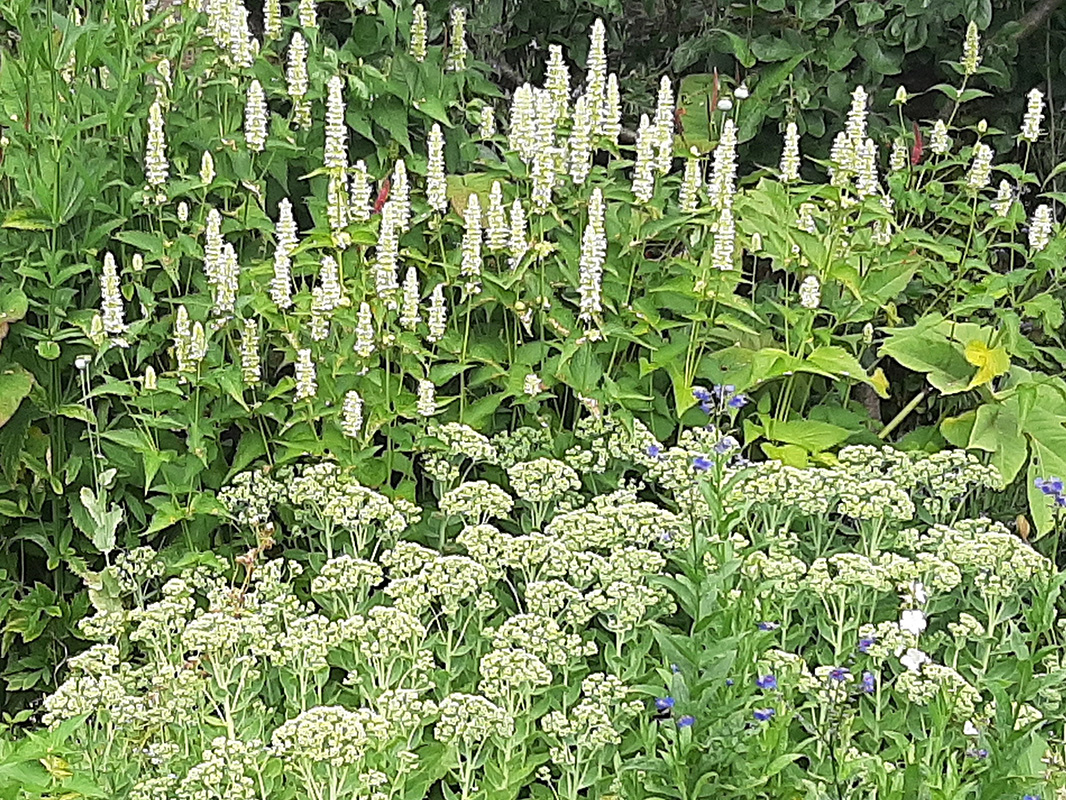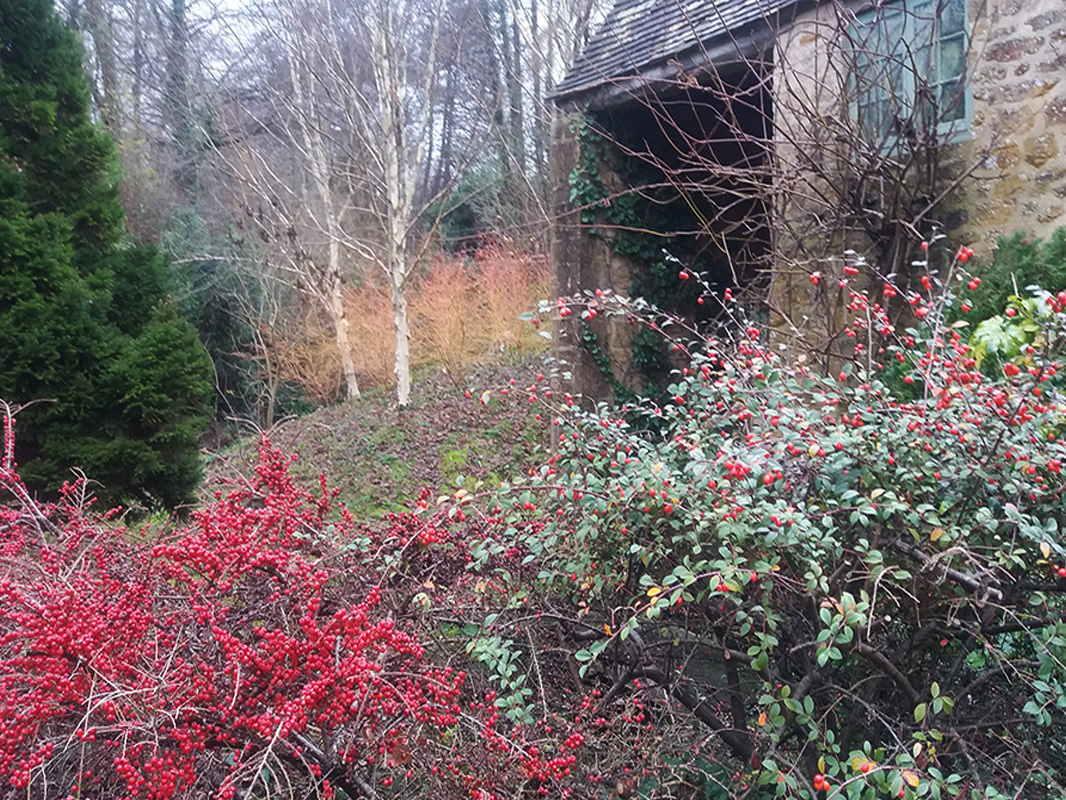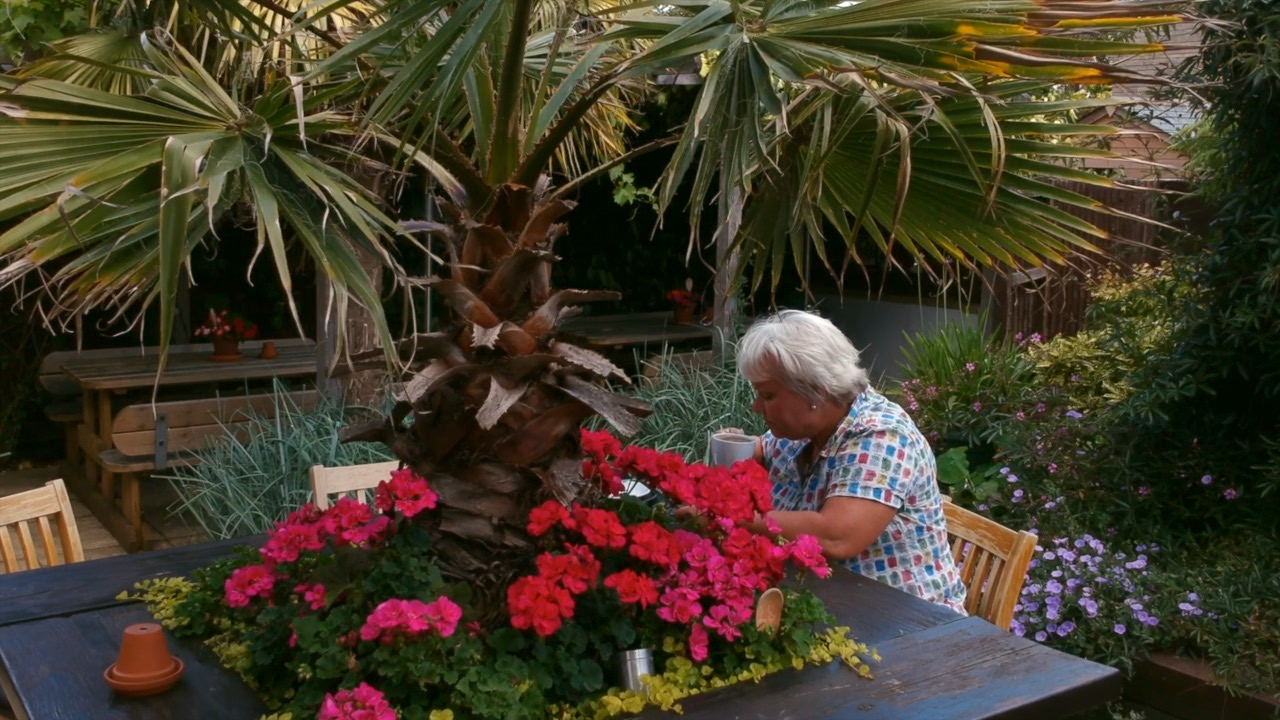Evergreen plants for all year round
It is during the last week in November that the oaks and beeches finally relinquish their russet leaves, the gingkos and field maples are surrounded by pools of gold and winter is nearly upon us. If you want a view from the kitchen sink that still pleases the eye I would advise having some evergreens in sight.
You need something to cheer you up. Your will to garden is never at a lower ebb than on a dull wet Christmas day when your hand is up a turkey’s bottom, the last flowers have gone over and the bulbs aren’t yet showing.
Mention evergreens and many gardeners think of conifers. Since the vogue for dwarf conifers and heather gardens in the 1970’s, they have fallen out of favour, when it slowly dawned on people that heathers grew scraggy after a few years, and there was no such thing as a dwarf conifer, only a slow growing conifer. If a conifer grew only 5cm a year, it kept doing it for the last 40 years and now the cute little dwarf is looming overhead. Tree surgeons are making a regular living removing these from weed infested rockeries, another feature now out of fashion.
If only I had a huge garden I should immediately plant conifer Cedrus libani, the magnificent Cedar of Lebanon. Failing that, a yew tree is second choice, although should not be planted where cattle may graze – which is surely why they were planted in churchyards. In a medieval country village cattle were driven to the common to graze and the only permanent enclosures may have been round the manor house and the church, and yew was necessary for making bows.
There are few native broadleaved evergreens apart from holly and ivy, which are celebrated in carols as a symbol of life in the dead of winter. Hollies have many beautiful colours, yet I have hesitated to plant any in my various gardens, since experiencing the exquisite pain of a spine of a dead holly leaf embedded under a fingernail while grubbing about in the border. I shall review that opinion after recently discovering Ilex meserveae, which has a softer spike than Ilex aquifolium varieties, as long as you stroke it the right way. I am hoping one day it will render holly wreath making less of a trial.
There are many non-native evergreen shrubs of a dark green and leathery nature grown for their leaves such as cherry laurel, fatsia, euonymus and eleagnus. Worthy plants all, they are gloomy en masse and I will always prefer an evergreen shrub with a decent flowering season as well, such as ceanothus, choisya, daphne, rhododendron, viburnum tinus, and camellia.
The latter three are still on the leathery spectrum so I like to lighten the scene with silvery edged pittosporum and contrast the shrubs with evergreen perennials. Some cover the ground better than in the cold winters of 30 years ago, when the leaves died back completely, but now pulmonarias, tellimas, geums, lamiums, wintergreen ferns and carex do much to clothe the nakedness of the winter garden. My favourite find recently for this job is Carex Everillo, a lime green sedge that will enjoy partial to total shade, gleaming out of the gloom all winter. Only 8 weeks to go, and the snowdrops will start to flower. Winter won’t feel so long after that.



